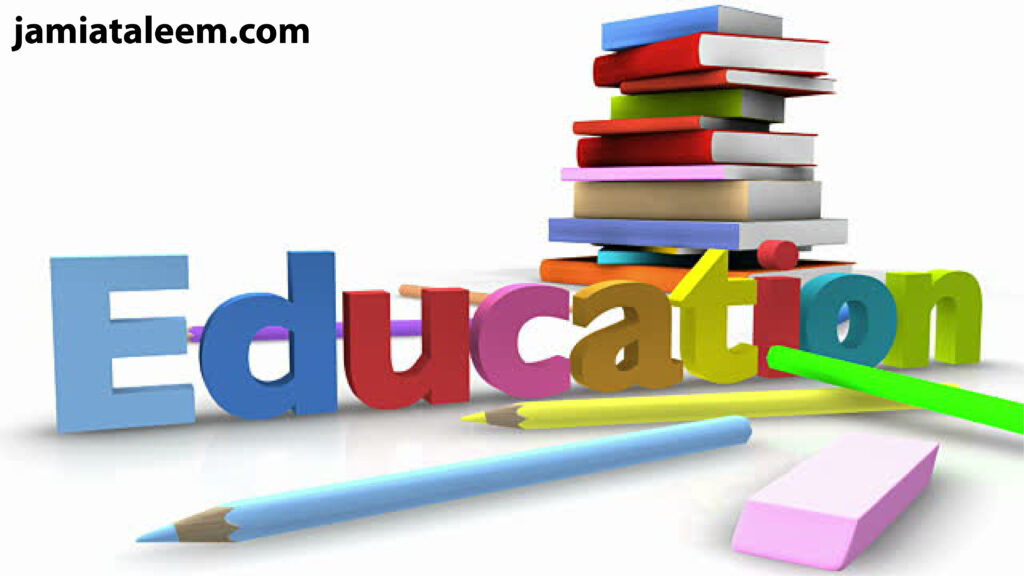According to the Pakistani Constitution, all children between 5 and 16 years old are entitled to free and compulsory education and adult literacy must be improved. In this blog, we discuss the education system of Pakistan.
State development and progress are closely correlated with education. It is the literacy rate and the quality of education in a country that determines the progress it makes. Therefore, it is a national priority. Among the world’s oldest education systems, Pakistan is the oldest.
Asia’s most comprehensive and effective curriculum can be found there. Nonetheless, the student system has several flaws that need to be addressed. Unfortunately, Pakistan has a low literacy rate compared to other countries. As compared to Pakistan, many poor countries have higher literacy rates. All of this is due to our education system.
Education system of Pakistan

There are 260,903 educational institutions in Pakistan, serving 41,018,384 students with the help of 1,535,461 teachers. 80,057 private institutions and 180,846 public institutions make up the system. Therefore, 31% of educational institutes are run by the private sector, while 69% are run by the public sector.
What is the Education System in Pakistan?
In the educational system, all organizations that provide formal education (public and private, for-profit and nonprofit, on-site or virtual) are included as well as their faculty, students, infrastructure, and resources. Furthermore, the system can be defined as the institutions that directly finance, manage, operate or regulate such institutions (such as government ministries and regulatory bodies, central testing organizations, textbook boards, and accreditation boards). As part of the education system, there are rules and regulations which govern individual and institutional interactions.
Analysis of Education System in Pakistan
Through its education policies at the domestic level and involvement in international education commitments, Pakistan has demonstrated its commitment to education and literacy. It is in this respect that national education policies propose strategies for increasing literacy rates, building capacity, and improving educational facilities. Pakistan is committed to promoting literacy globally through MDGs and EFA programs.
What is the current situation of education in Pakistan?
There was a literacy rate of 18% in 1951 in Pakistan, with male literacy at 19% and female literacy at 12%, respectively. As a result, it increased to 60%, 71%, and 49% in 2018-19. According to the United Nations Development Program (UNDP) Human Development Index (HDI), Pakistan ranks 152 out of 189 countries.
How easy is education in Pakistan?
Pakistan’s literacy rate of 65% is still far behind other countries with literacy rates over 90%, such as Norway with a literacy rate of 99%, Japan with a literacy rate of 97%, and the United States and Canada with literacy rates of 95%. There are five levels of education in Pakistan.
How to improve the education system in Pakistan?
As the best way to improve the education system in Pakistan will differ based on the country’s particular needs and conditions, there is no one-size-fits-all answer.
The following ideas may prove helpful, however:
Education in Pakistan is of low quality, and schools are of low quality. These schools offer low-quality education. Primary education is only available to half of Pakistani students. School dropout rates are high among students. Pakistan does not have enough quality schools to meet its people’s educational needs. In order to improve the quality of education, the government should provide more funding to the education sector.
Why is Education so important?
Pakistan’s education system plays an important role in developing a well-educated population that can contribute to its growth and development. Individuals receive education in order to participate in the workforce and contribute to society.
The importance of education in our lives cannot be overstated. Learning new things and growing as a person are both facilitated by it. We can gain confidence and success by working and getting paid for it. The importance of education in our lives cannot be overstated. It can help us learn new things and grow as people. Our careers can provide us with opportunities to work and earn money, as well as help us become more confident and successful.
The Causes of the Uneducated Population in Pakistan
Many factors contribute to Pakistan’s uneducated population. The following are some of the reasons.
Lack of resources: There are a large number of uneducated people in Pakistan who live in poverty.
Limited resources: There are only a few schools in Pakistan that are able to offer free education. There are only a few schools in Pakistan that provide free education, and these schools have limited resources. There is a need for more resources to be provided to Pakistani schools by the government.
Understanding the problem is the first step to improving the education system in Pakistan. After that, we need to find a solution. The purpose of education is to develop the skills necessary to become an effective member of society, not just to learn facts.
Which education system is best in Pakistan?
- Roots Millennium School. …
- Lahore Grammar Schools. …
- Karachi Grammar School. …
- The City School. …
- Dar-e-Arqam Schools. …
- Pak-Turk International School. …
- Sadiq Public School.
Pakistan’s education needs to be improved. Pakistan’s education system is very poor. It is common for schools to be underfunded and underresourced.
Educational systems are most successful when parents are involved. Parents can either help or hinder their children’s education. In order to help parents raise their children, you need to educate them.
We must teach our children the right values, morals, and attitudes if we wish to change our society for the better. It’s the only way to make their world better.
